Growing your own vegetables transforms both your dinner table and your connection to fresh food. We’ve discovered that starting a vegetable garden doesn’t require acres of land or years of experience – it just needs the right plant choices and a bit of planning.
Whether you’re working with a sprawling backyard or a compact balcony we’ll show you vegetable varieties that thrive in different spaces and growing conditions. From quick-growing lettuce that’s ready in weeks to robust tomatoes that’ll supply your kitchen all season long the possibilities are endless.
We’re here to guide you through selecting vegetables that match your taste preferences growing space and skill level. You’ll learn which crops deliver the biggest harvests which ones practically grow themselves and how to maximize your garden’s potential no matter where you’re starting from.
Choose Easy-to-Grow Vegetables for Beginner Gardeners
Starting with the most forgiving vegetables sets you up for gardening success. These crops tolerate mistakes and produce quick results that keep you motivated.
Lettuce and Leafy Greens
Lettuce grows faster than most vegetables and forgives watering mistakes that kill other plants. We can harvest baby leaves in just 30 days or wait 60 days for full heads. Spinach, arugula, and kale offer similar growing patterns with even more nutritional value.
Cool weather actually improves the flavor of these leafy vegetables. Plant them in early spring or fall when temperatures stay between 45-75°F. They’ll bolt and turn bitter in summer heat, but succession planting every two weeks extends your harvest season.
Container growing works perfectly for lettuce and leafy greens since their shallow roots need only 4-6 inches of soil depth. Window boxes, raised beds, or even repurposed plastic containers provide adequate growing space. We recommend loose leaf varieties like Black Seeded Simpson or Red Sails for continuous harvesting.
Radishes and Carrots
Radishes mature in just 25-30 days, making them perfect confidence builders for new gardeners. Cherry Belle and French Breakfast varieties grow reliably in most soil conditions. Their quick germination also helps mark slower growing crop rows like carrots or parsnips.
Carrots take longer at 70-80 days but require minimal maintenance once planted. Nantes and Paris Market varieties work well in containers or shallow soils. We suggest mixing carrot seeds with sand for easier, more even distribution in garden rows.
Both root vegetables prefer loose, well draining soil without rocks or clay chunks that cause forked or stunted growth. Adding compost or aged manure improves soil texture naturally. Direct seeding works best since these vegetables don’t transplant well due to their taproot structure.
Bush Beans and Peas
Bush beans produce heavy yields without requiring trellises or supports that pole varieties need. Provider and Contender varieties resist common diseases and produce pods ready for picking in 50-55 days. We can plant them every two weeks through summer for continuous harvests.
Peas prefer cooler weather and can handle light frosts that damage warm season crops. Sugar snap peas like Sugar Ann provide edible pods and sweet peas inside. Plant them 4-6 weeks before your last frost date for spring harvests.
Both legumes actually improve garden soil by fixing nitrogen through their root systems. This natural fertilizer benefit helps surrounding plants grow better. Their climbing or bushing growth habits also provide living mulch that suppresses weeds and retains soil moisture.
Plan Your Garden Layout for Maximum Productivity
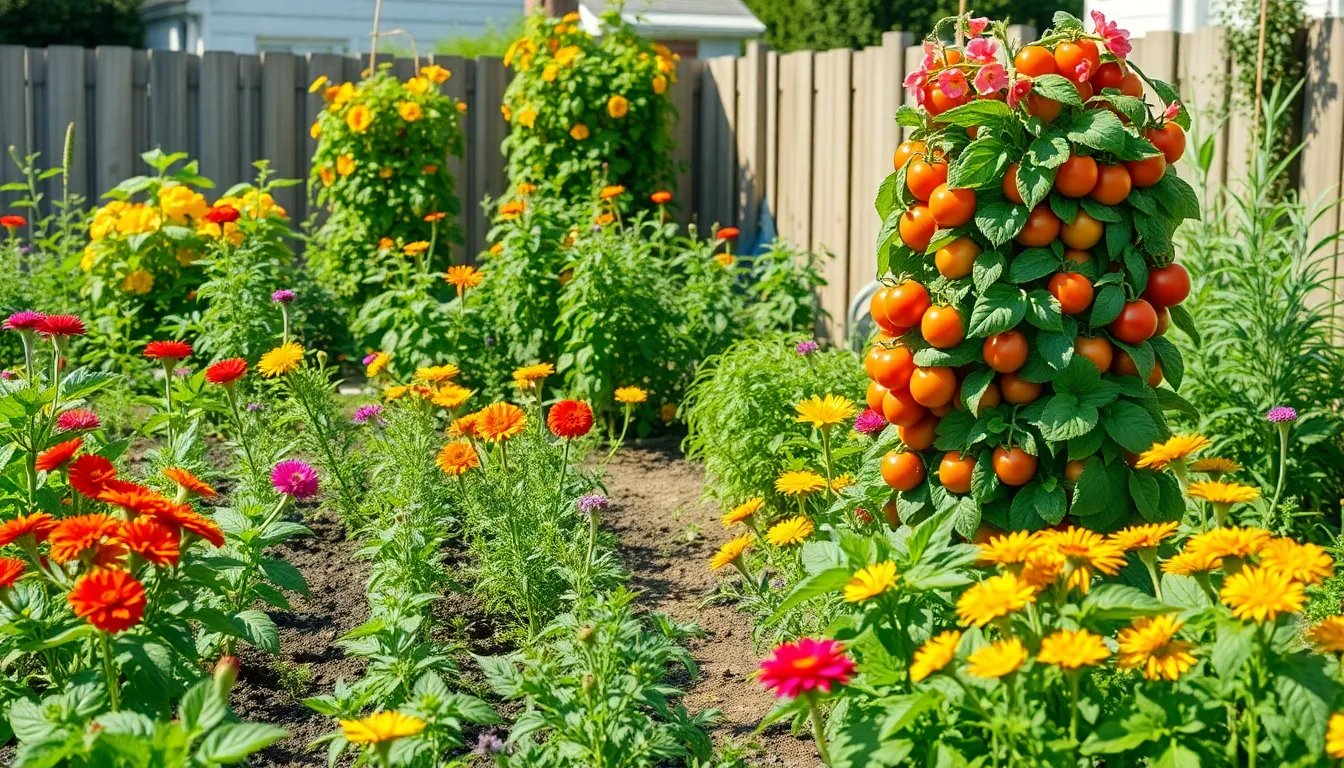
Strategic placement of vegetables transforms small spaces into productive growing areas. We’ll optimize our garden space by arranging plants based on their growth habits, sunlight requirements, and soil needs.
Companion Planting Strategies
Companion planting pairs different vegetables together to boost growth, enhance flavors, and naturally repel pests. We recommend planting tomatoes with basil since basil repels harmful insects while improving the flavor of nearby tomatoes. Marigolds planted alongside tomatoes create another powerful combination as they repel destructive nematodes from the soil.
Certain plant combinations work against each other and should be avoided. We never plant cabbage near tomatoes because these vegetables compete for similar nutrients and space, reducing yields for both crops. Smart companion choices include carrots with chives, peppers with oregano, and cucumbers with nasturtiums for natural pest control.
Vertical Growing Answers
Vertical gardening maximizes space efficiency by growing plants upward instead of outward. We use trellises for climbing vegetables like peas, beans, and indeterminate tomatoes to support their natural growth habits. Wall mounted planters work perfectly for trailing crops like cherry tomatoes and compact cucumber varieties.
Stackable tower gardens allow us to grow multiple layers of leafy greens in minimal floor space. We position climbing plants on the north side of our garden to prevent them from shading shorter vegetables. Wire cages, bamboo poles, and mesh panels create sturdy support systems for heavy fruiting plants like squash and melons.
Succession Planting Techniques
Succession planting ensures continuous harvests by staggering plantings throughout the growing season. We plant new lettuce seeds every 2 weeks to maintain a steady supply of fresh greens rather than harvesting everything at once. Fast growing vegetables like spinach, radishes, and arugula work best for succession planting schedules.
Cool season crops can be replanted multiple times during spring and fall growing periods. We start our first lettuce plantings 4 weeks before the last frost date and continue planting until summer heat arrives. This technique works especially well for salad greens, herbs, and root vegetables that mature quickly and don’t require long growing seasons.
Select Vegetables Based on Your Climate Zone
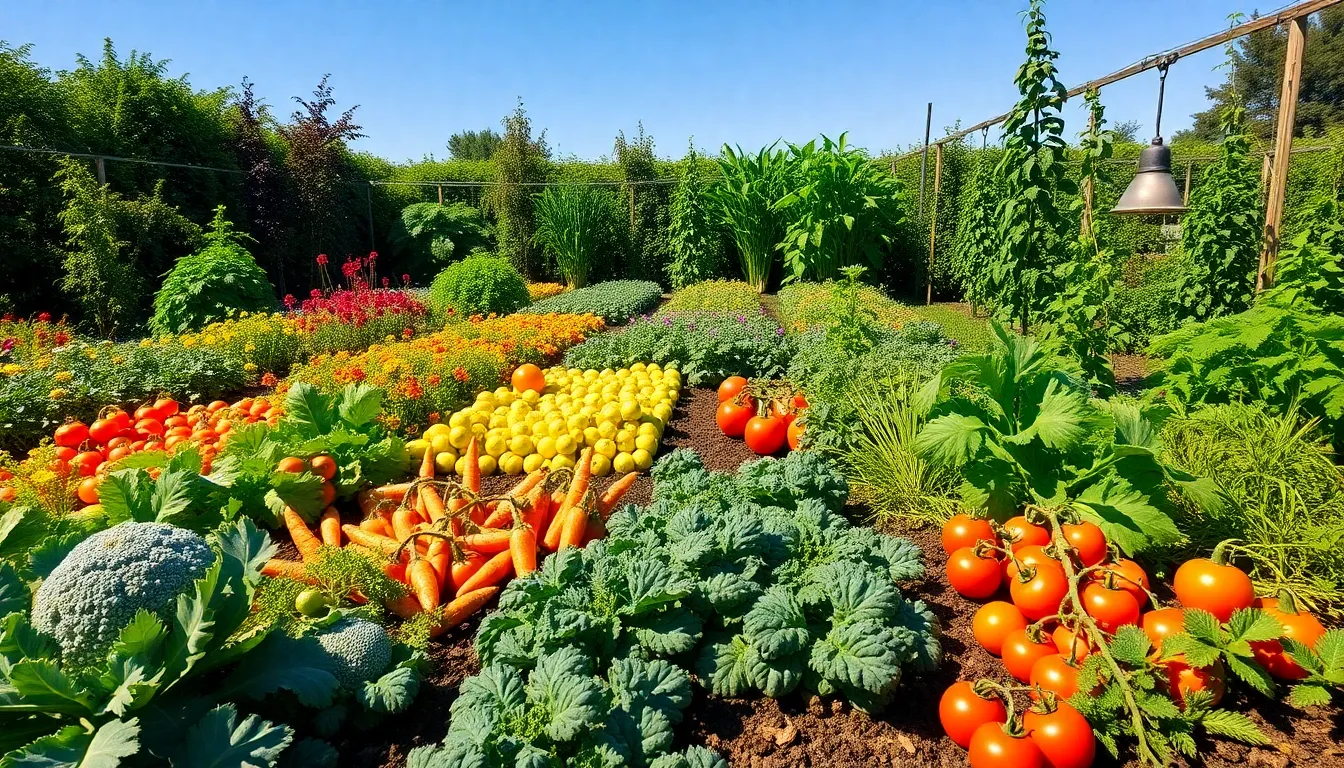
Understanding your local climate zone helps us make informed decisions about which vegetables will thrive in our gardens. Different vegetables perform best within exact temperature ranges and growing seasons.
Cool-Season Crop Options
Cool season vegetables flourish when temperatures range between 60-70°F and can tolerate light frosts. Broccoli, cabbage, carrots, kale, lettuce, onions, peas, potatoes, radishes, spinach, turnips, and winter squash perform exceptionally well during early spring or late summer plantings.
Kale and collard greens demonstrate remarkable resilience against cold weather conditions. These hardy varieties can survive light frosts while continuing to produce nutritious leaves throughout the cooler months.
Asparagus, beets, Brussels sprouts, and turnips represent excellent choices for gardeners in cooler climate zones 5-6. We can plant these vegetables in early spring when soil temperatures reach 45-50°F for optimal germination.
Warm-Season Favorites
Warm season crops require soil temperatures above 60°F and cannot tolerate frost conditions. Corn, cucumbers, eggplants, okra, peppers, squash, tomatoes, and watermelon thrive when planted during late spring to early summer months.
Beans, eggplants, and peppers excel in warmer climate zones 7-10 where extended growing seasons allow for multiple harvests. These heat loving vegetables produce continuously throughout summer months when provided with consistent moisture and full sunlight exposure.
Tomatoes and watermelon require the longest warm growing periods among summer vegetables. We should wait until soil temperatures consistently reach 65°F before transplanting these crops to ensure successful establishment.
Extended Season Varieties
Fast maturing varieties help us maximize harvests in areas with shorter growing seasons. Tomatoes, winter squash, dried beans, eggplant, peppers, and corn offer specialized cultivars that reach maturity 10-20 days earlier than standard varieties.
Succession planting allows us to extend harvest periods for cool season crops throughout fall months. Planting new batches of lettuce, radishes, and spinach every 2-3 weeks ensures continuous production until the first hard frost.
Determinate tomato varieties and bush type winter squash provide compact growth habits perfect for short season gardening. These space efficient options concentrate their energy into producing mature fruits within 75-85 days from transplanting.
Consider Space-Saving Vegetable Garden Ideas
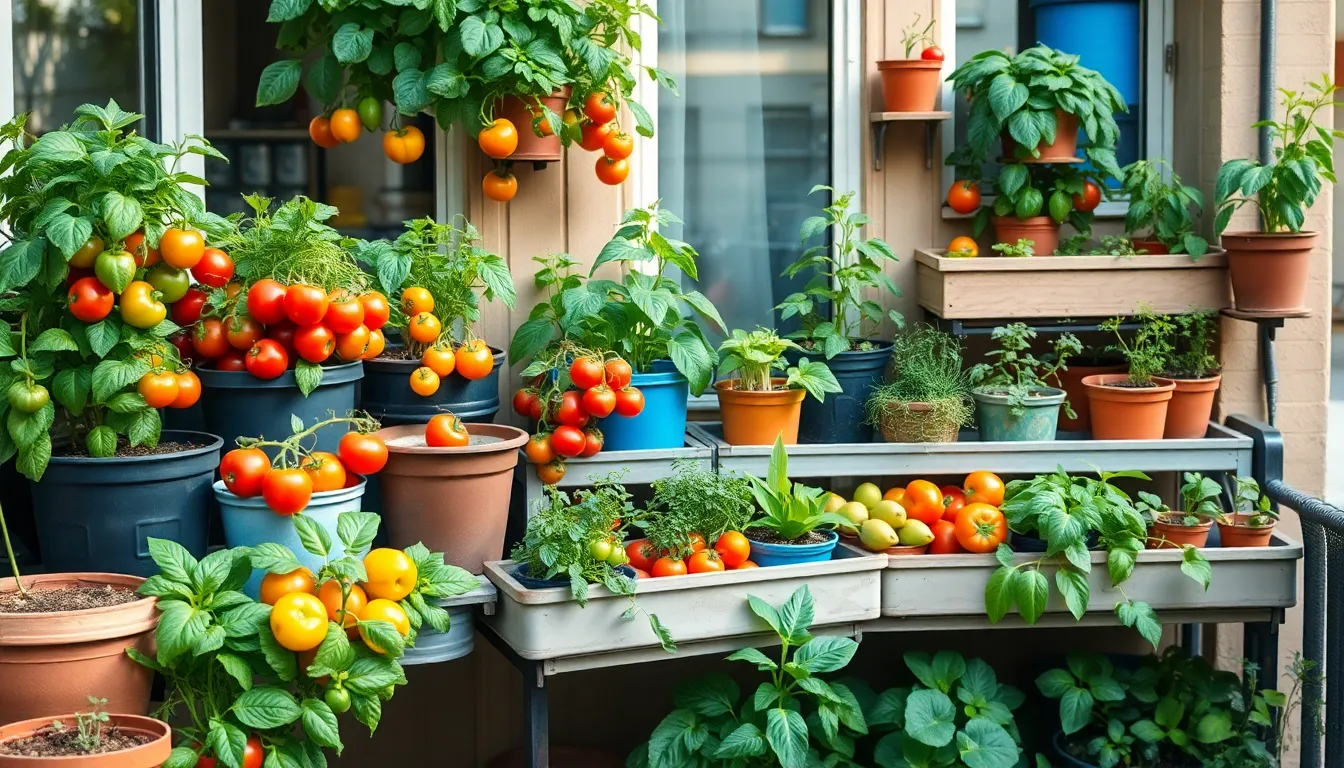
Limited space doesn’t mean we have to sacrifice our vegetable growing dreams. Strategic planning and creative answers can transform even the smallest areas into productive growing spaces.
Container Gardening Answers
Containers offer flexibility that traditional gardens simply can’t match. We can grow vegetables in pots, grow bags, or repurposed containers on patios, balconies, or even parking spaces. Window boxes attached to railings, walls, or pallets create additional growing surfaces for herbs and compact vegetables.
Elevated shelving systems work wonders for maximizing vertical space. Wall shelves or ladder displays ensure sunlight reaches all our plants while creating an attractive garden feature. Containers of all sizes accommodate different vegetable varieties, from deep pots for tomatoes to shallow planters for lettuce and leafy greens.
| Container Type | Best Vegetables | Space Requirements |
|---|---|---|
| Window boxes | Herbs, lettuce, radishes | 6-8 inches deep |
| Grow bags | Tomatoes, peppers, beans | 15-20 gallons |
| Standard pots | Root vegetables, compact varieties | 12+ inches diameter |
Square Foot Gardening Method
Square foot gardening divides our growing area into manageable 1×1 foot sections. Each square receives exact crops based on their mature size and growing requirements. This method optimizes space usage while simplifying maintenance and harvest planning.
Intercropping becomes incredibly efficient with this system. We can grow quick maturing crops like radishes alongside slower developing vegetables such as tomatoes or peppers. This technique maximizes yield per square foot by utilizing every inch of available growing space.
Grid systems help us visualize plant spacing and prevent overcrowding. Wooden or string grids create clear boundaries for each vegetable variety, making it easier to rotate crops and plan successive plantings throughout the growing season.
Raised Bed Configurations
Standard rectangular raised beds provide easy construction and management options. These elevated growing spaces improve drainage and aeration while allowing us to control soil quality more effectively. Wood, stone, or composite materials create durable bed walls that last for multiple growing seasons.
Keyhole shaped or circular raised beds promote efficient use of space and materials. These designs often include central compost baskets that deliver continuous nutrients to surrounding plants, creating a self sustaining growing system ideal for urban environments.
Multi level raised beds accommodate different plant types and improve accessibility. Stacked beds or varying heights allow us to grow trailing vegetables on lower levels while keeping taller crops in elevated positions. This configuration maximizes growing space while reducing the physical strain of gardening maintenance.
Explore Unique and Heirloom Vegetable Varieties
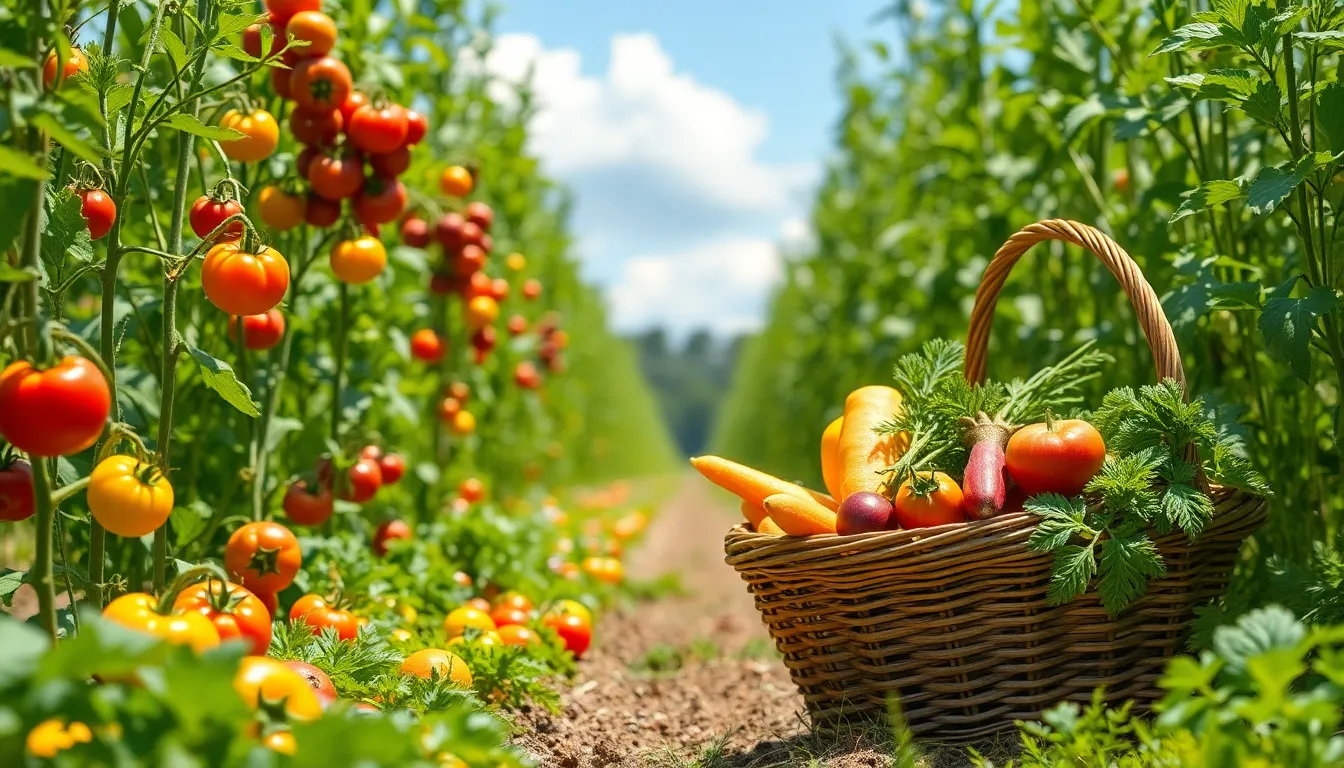
Heritage vegetables offer exceptional flavors and genetic diversity that you won’t find in typical grocery store produce. These open-pollinated varieties allow us to save seeds year after year while preserving gardening traditions passed down through generations.
Colorful Tomato Options
Black Krim transforms our garden palette with its dark red-brown skin and complex, smoky flavor that’s perfect for gourmet dishes. Green Zebra creates striking visual appeal with its green-yellow striped pattern and tangy taste that adds zest to salads. Cherokee Purple delivers deep dusky pink coloring alongside rich, sweet flavors that make it a favorite among heirloom enthusiasts.
Yellow Pear produces bright yellow, pear-shaped fruits that cluster abundantly on vines and offer mild, sweet flavors ideal for snacking. These colorful varieties provide unique tastes beyond traditional red tomatoes while creating stunning visual displays in our gardens and on our plates.
Unusual Root Vegetables
Rainbow carrot mixes include varieties like “Cosmic Purple,” “Solar Yellow,” and “Atomic Red” that bring vibrant colors to our harvest baskets. Purple carrots offer sweet, earthy flavors while yellow varieties provide milder tastes than traditional orange types. Blue potatoes create striking purple flesh that maintains its color even after cooking and delivers nutty, rich flavors.
Golden beets produce bright yellow roots that won’t stain our hands or cutting boards like traditional red varieties. Parsnips offer cream-colored roots with sweet, nutty flavors that intensify after frost exposure. These unusual root vegetables expand our culinary options while adding visual interest to both garden beds and dinner plates.
Heritage Seed Collections
Cherokee Trail of Tears beans preserve the history of Native American agriculture while producing purple pods that turn green when cooked. Moon and Stars watermelon features distinctive yellow spots on dark green skin that make each fruit a conversation piece. Heritage seed companies specialize in these rare, open-pollinated varieties that help maintain agricultural biodiversity.
Seed-saving organizations ensure these precious varieties remain available for future gardeners to enjoy. Regional collections often feature vegetables adapted to exact climates and growing conditions. These heritage selections offer us connections to gardening traditions while providing unique flavors and stories that commercial varieties simply can’t match.
Focus on High-Yield Vegetables for Small Spaces
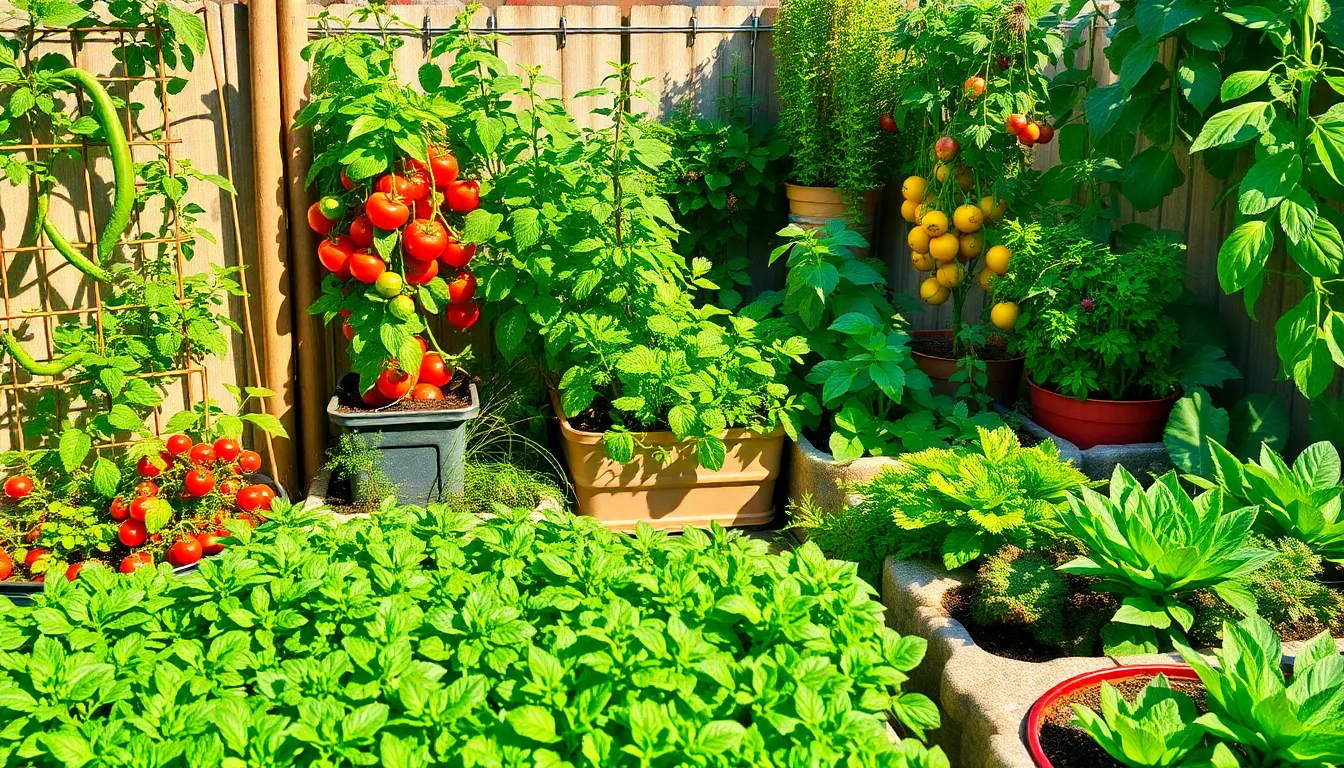
When space is limited, we need vegetables that deliver maximum harvests from minimal square footage. Strategic plant selection transforms even the smallest garden areas into productive growing spaces.
Pole Beans and Climbing Varieties
Pole beans are vigorous climbers that can grow over 10 feet tall, making them perfect for vertical gardening in compact spaces. Varieties like French Gold, Emerite, Rattlesnake, and Purple Podded Pole beans offer exceptional yields while requiring minimal ground space. These climbing vegetables produce continuously throughout the growing season when harvested regularly.
Cucumbers thrive when grown vertically on trellises or arches, maximizing our growing space while reducing fruit loss from ground contact. Supporting these vining crops prevents disease issues and makes harvesting easier. Vertical growing also improves air circulation around the plants, leading to healthier growth and higher yields.
Compact Bush Vegetables
Tomatoes come in compact varieties specifically bred for small spaces, such as Patio and Tiny Tim cultivars that perform excellently in containers. These determinate varieties produce full sized harvests without sprawling growth habits. Container grown tomatoes can be moved to capture optimal sunlight throughout the day.
Peas offer bush varieties that eliminate the need for tall supports while still providing substantial harvests in confined areas. These compact plants mature quickly and can be succession planted for continuous production. Bush peas work particularly well in raised beds where space efficiency matters most.
Radishes are fast growing vegetables that can be grown successfully in containers, offering multiple flavor profiles from mild to spicy varieties. These root vegetables mature in just 30 days, allowing for multiple plantings per growing season. Radishes also serve as excellent companion plants, breaking up soil for neighboring crops.
Cut-and-Come-Again Plants
Lettuce and other leafy greens are ideal for small spaces because they can be harvested continuously without replanting. Varieties like Tom Thumb lettuce are particularly compact and suitable for container growing. These crops provide fresh salads throughout the growing season with minimal space investment.
Spinach and arugula can be grown in small areas and harvested multiple times before needing replanting. Both crops thrive in cooler weather, extending our growing season beyond summer months. These nutrient dense greens offer exceptional value per square foot of garden space.
Raised beds and containers optimize our available space while providing better growing conditions for high yield vegetables. Planting multiple varieties together enhances growth through companion planting benefits and reduces waste. Adequate sunlight and consistent watering ensure these space efficient crops reach their maximum yield potential.
Include Herbs That Double as Pest Deterrents
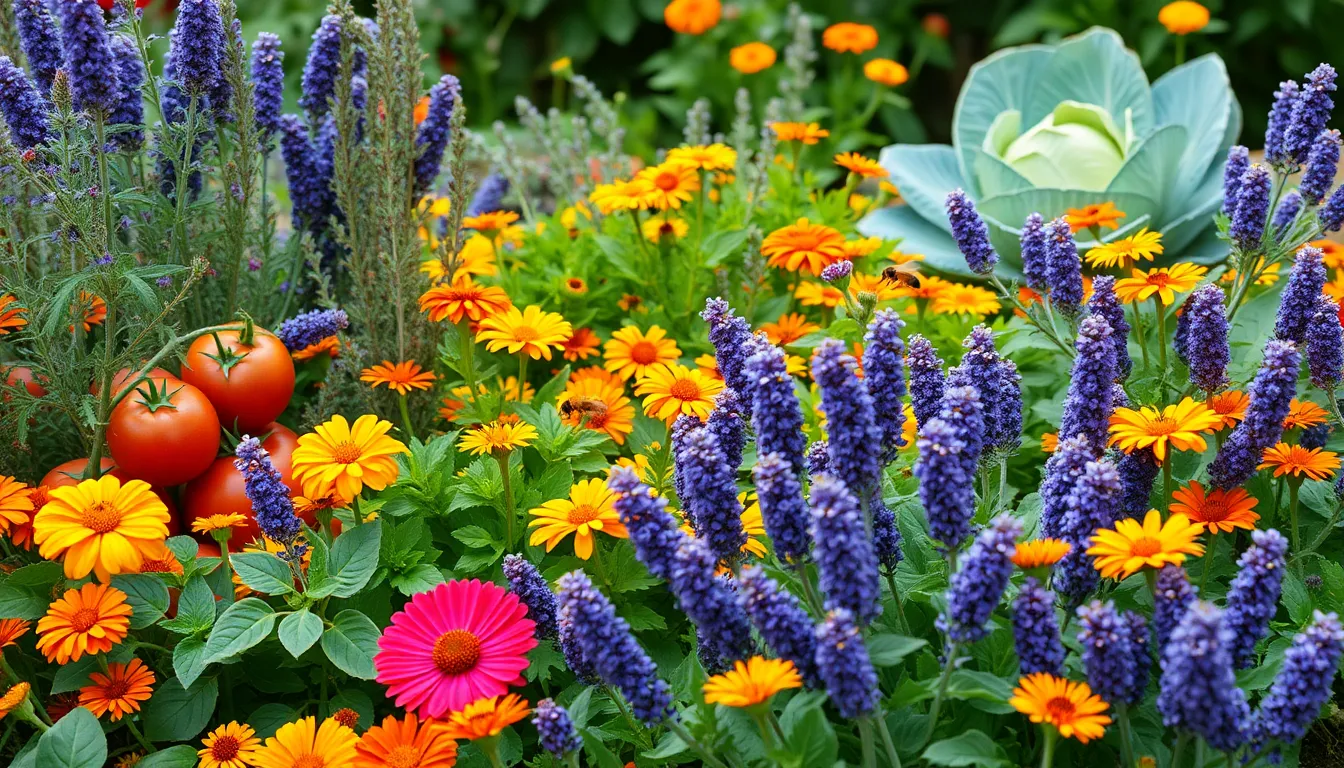
Strategic herb placement throughout your vegetable garden creates a natural defense system while improving your culinary collection. These fragrant plants work around the clock to repel harmful insects through their powerful essential oils and compounds.
Aromatic Herb Companions
Basil planted near tomatoes enhances both growth and flavor while deterring whiteflies and mosquitoes through its strong scent. We’ve found this classic pairing not only improves tomato taste but also creates a natural barrier against common garden pests.
Rosemary thrives when positioned near garden pathways and entrances due to its exceptional pest repelling properties and minimal maintenance requirements. This hardy herb releases continuous aromatic compounds that discourage various insects from entering your growing space.
Thyme and sage planted near cabbage effectively repel cabbage moths and beetles that typically devastate brassica crops. Both herbs release volatile oils that mask the scent signatures insects use to locate their preferred host plants.
Lavender creates protective zones around vulnerable vegetables while attracting beneficial pollinators like bees and butterflies. Its distinctive fragrance overwhelms pest insects’ sensory systems while supporting the garden’s overall network balance.
Natural Pest Control Plants
Marigolds release thiophene, a natural compound that repels nematodes and aphids from surrounding soil and plant surfaces. We recommend planting these bright flowers throughout vegetable beds for continuous pest protection and visual appeal.
Chrysanthemums contain pyrethrin, a powerful natural insecticide that effectively controls various garden pests without synthetic chemicals. These flowers provide both decorative value and serious pest management capabilities for organic gardeners.
Nasturtiums act as trap crops by attracting aphids and cucumber beetles away from valuable vegetables while adding edible flowers to your harvest. Their peppery blooms create sacrificial zones that protect your main crops.
Alliums including garlic and chives deter multiple pest species through their sulfur compounds while contributing flavor to your kitchen garden. These versatile plants repel everything from aphids to larger mammals that might browse your vegetables.
Culinary and Medicinal Options
Rosemary, basil, thyme, and sage provide triple benefits as pest deterrents, culinary ingredients, and traditional medicinal herbs. We can harvest these plants regularly for cooking while maintaining their protective properties in the garden.
Garlic doubles as both a natural pest deterrent and essential cooking ingredient with recognized medicinal properties. This powerful allium releases compounds that discourage insects while supporting human health through its antimicrobial benefits.
Coriander (cilantro) offers fresh leaves for culinary use while its flowers attract beneficial insects and its seeds provide pest control properties. The entire plant cycle contributes to garden health and kitchen variety.
Lemon balm creates natural boundaries around vegetables while providing leaves for teas and medicinal preparations. Its intense citrus scent effectively masks vegetable odors that attract harmful insects to your growing areas.
Plan for Continuous Harvest Throughout the Season
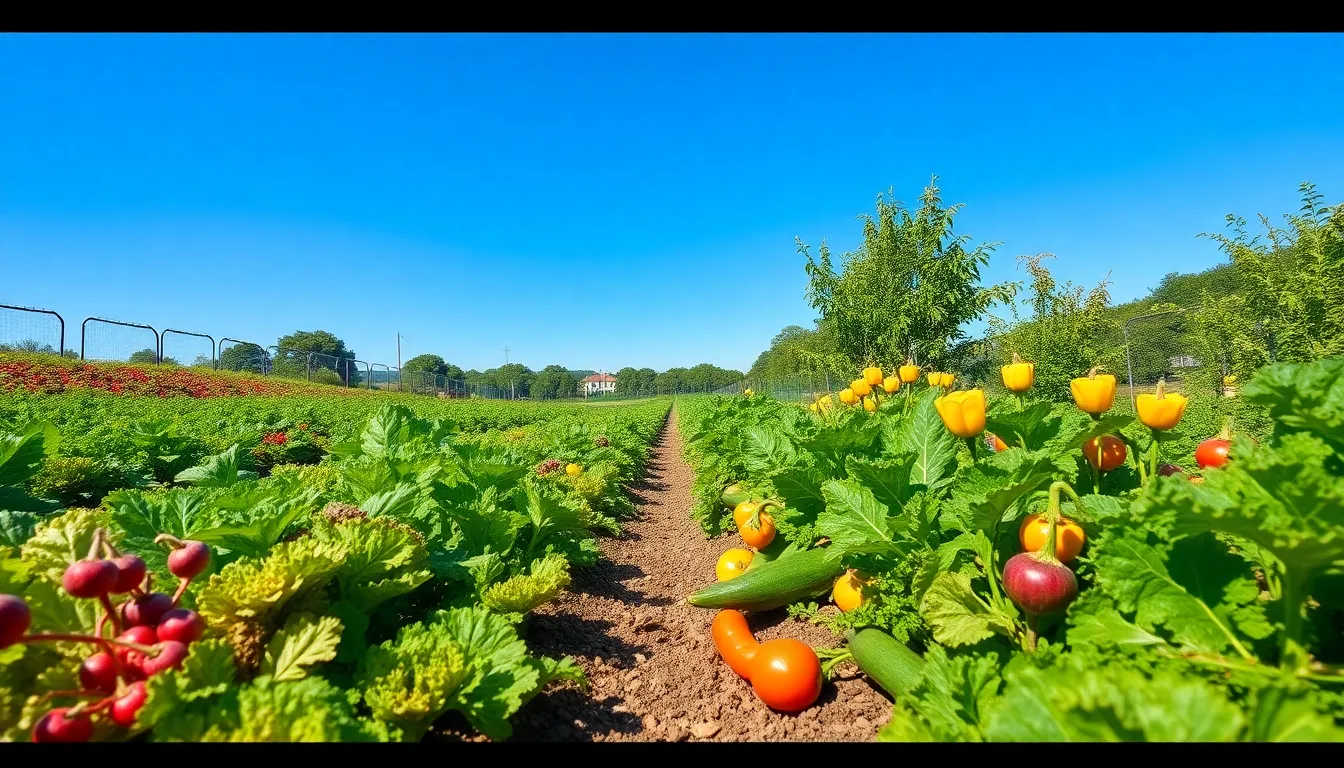
We’ll maximize our garden’s productivity by strategically timing plantings throughout the year. Smart seasonal planning ensures we’re harvesting fresh vegetables from early spring through late fall.
Early Spring Plantings
Lettuce and spinach offer the earliest rewards when we plant them seven weeks before our last frost date. These cool weather champions thrive in temperatures between 45-65°F and provide continuous harvests when we succession plant every 7-14 days.
Radishes mature incredibly fast at just 25-30 days, making them perfect for impatient gardeners and quick spring harvests. We can sow these crunchy roots directly in the garden as soon as soil can be worked in early spring.
Carrots need early spring sowing to develop their sweetest flavor before summer heat arrives. Plant these taproots in loose, well-draining soil 2-3 weeks before the last expected frost for optimal summer harvests.
Summer Heat-Tolerant Varieties
Peppers become our garden workhorses during hot summer months, producing continuously until the first frost arrives. These heat lovers thrive in temperatures above 70°F and actually improve their fruit production during the hottest weeks.
Cucumbers, zucchini, and squash deliver all season harvests when we manage diseases and pests effectively. These prolific producers need consistent watering and weekly harvests to maintain peak production throughout summer.
Okra, pole beans, and indeterminate tomatoes continue producing throughout the entire summer season with proper care. These heat tolerant champions actually perform better during hot weather than their cool season counterparts.
Fall and Winter Garden Options
Broccoli planted in late summer provides delicious fall harvests when temperatures cool to 60-70°F. This cool season crop develops better flavor and texture when it matures during shorter autumn days.
Brussels sprouts require about 120 days to mature, making late summer planting essential for fall harvests. These miniature cabbages actually taste sweeter after experiencing light frosts in autumn.
Kale and spinach planted in late summer extend our harvests well into winter months. These hardy greens tolerate temperatures down to 20°F and become sweeter after frost exposure.
Choose Vegetables That Store Well After Harvest
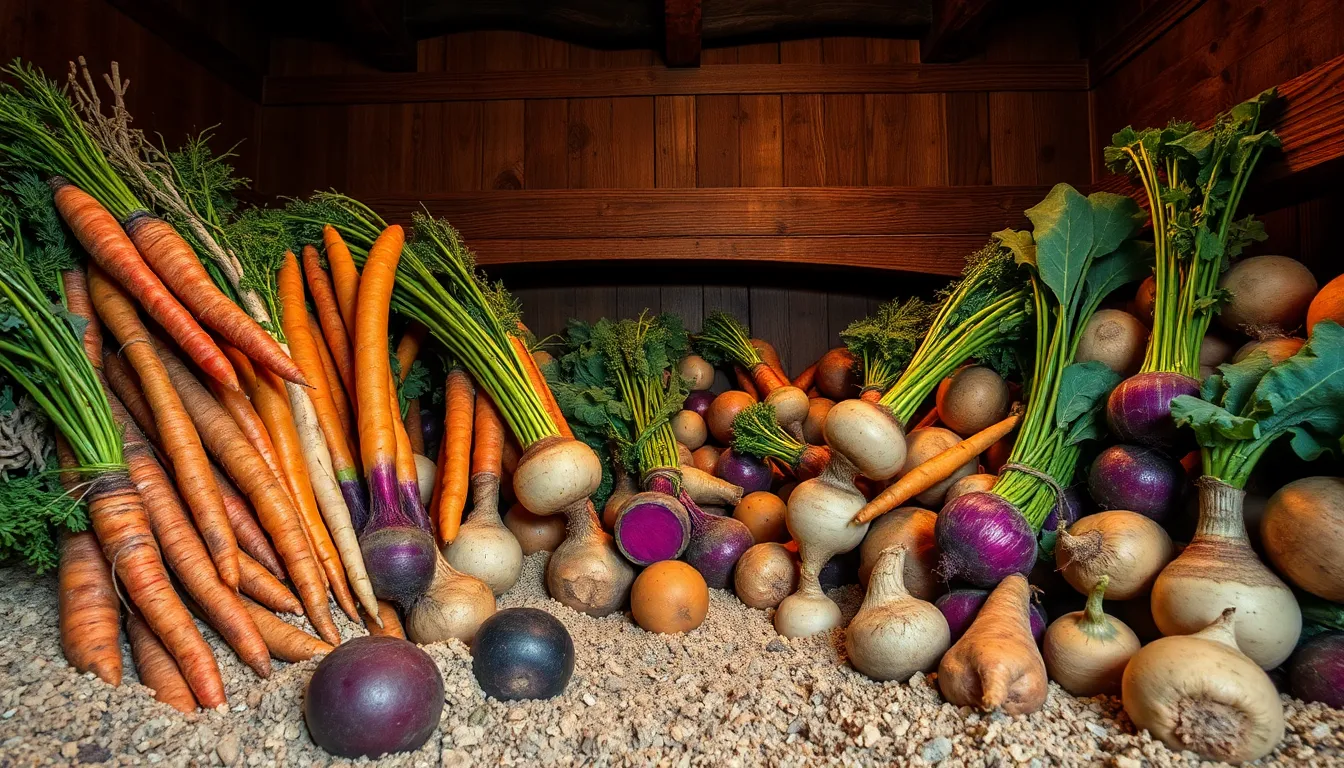
We’ve covered growing techniques and garden planning, but selecting vegetables that extend your harvest well into winter months makes your gardening efforts truly worthwhile. Smart storage choices transform a seasonal hobby into year-round fresh food security.
Root Cellar Vegetables
Root vegetables excel in cold, humid storage conditions and remain fresh for months without refrigeration. Carrots, beets, turnips, rutabagas, and celery root are our top recommendations for long-term storage success. These hardy vegetables maintain their nutritional value and crisp texture when stored properly in root cellars or similar cool environments.
Storage methods for root vegetables require exact techniques to prevent moisture loss. We recommend storing these crops in sand, sawdust, or slightly damp soil within your root cellar. This approach maintains optimal humidity levels and prevents the vegetables from shriveling or becoming woody.
Cabbage varieties offer exceptional winter storage potential when you choose the right cultivars. Green storage varieties like Storage No. 4 and Brunswick, along with red types such as Ruby Perfection and Mammoth Red Rock, store well into winter months. Potatoes and kohlrabi also thrive in root cellar conditions alongside these traditional storage champions.
Freezing-Friendly Options
Green vegetables retain their quality and nutritional value exceptionally well when properly frozen. Green beans, peas, corn, spinach, kale, and broccoli maintain their flavor profiles and nutrient density through the freezing process. We’ve found these vegetables particularly reliable for winter meal planning.
Blanching techniques ensure optimal texture and color preservation in frozen vegetables. Brief blanching before freezing stops enzyme action that would otherwise degrade quality during storage. This simple step prevents the mushy textures and faded colors that plague improperly prepared frozen vegetables.
Preparation timing makes the difference between restaurant-quality frozen vegetables and disappointing results. We recommend harvesting these crops at peak ripeness, then processing them within hours for maximum quality retention.
Preservation-Suitable Varieties
Canning and pickling transform fresh garden produce into shelf-stable pantry staples. Cucumbers for pickles, tomatoes, peppers, green beans, and carrots are commonly preserved through these traditional methods. Onions can be incorporated into canned mixtures or stored fresh using proper curing techniques.
Winter squash varieties provide year-round storage without any processing requirements. Butternut, Hubbard, and Sibley squash last up to a year when cured and stored at cool temperatures between 45-55°F. These versatile vegetables require minimal storage infrastructure compared to other preservation methods.
Drying techniques work exceptionally well for exact garden vegetables that concentrate their flavors. Peppers transform into flavorful chili flakes, while garlic and tomatoes create concentrated ingredients for cooking. Onions and garlic store for months when properly cured and kept in dry, cool, dark locations, with softneck garlic varieties typically outlasting hardneck types in storage longevity.
Consider Low-Maintenance Perennial Vegetables
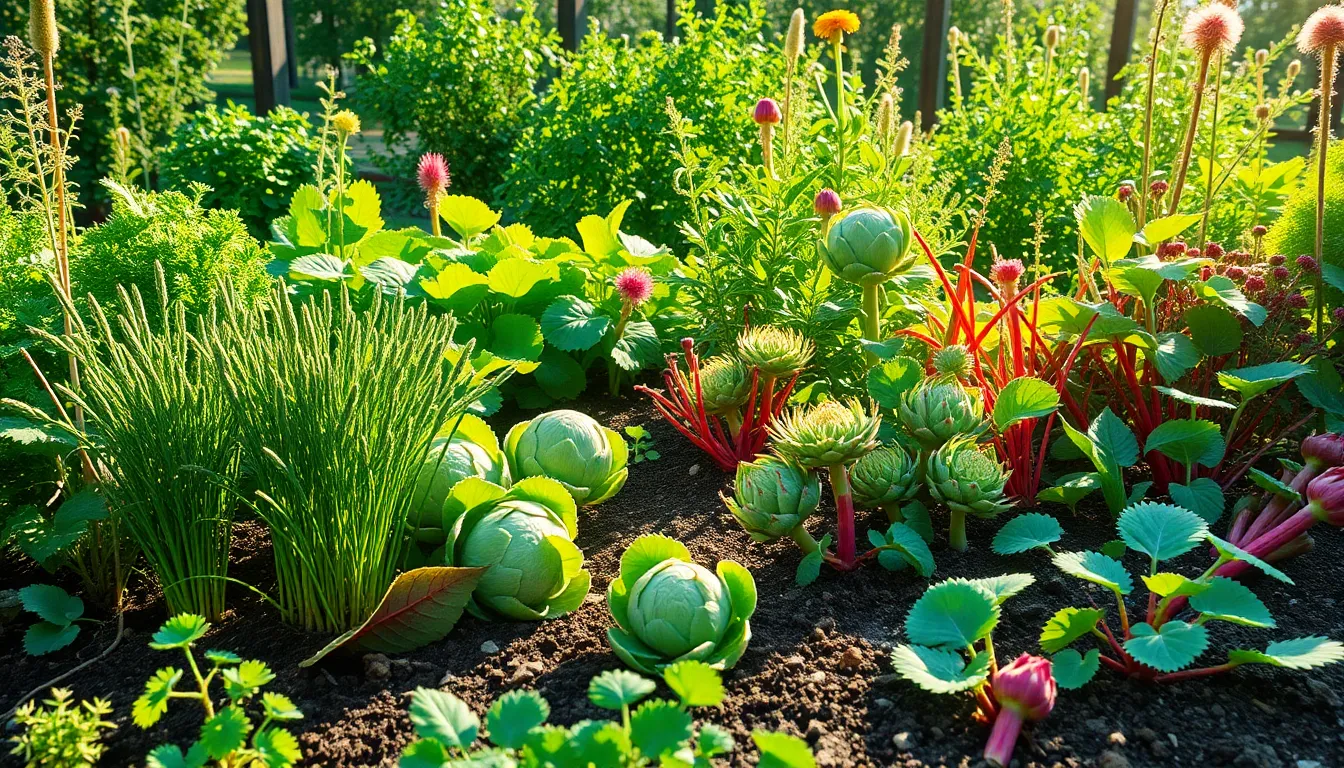
We can transform our gardening approach by investing in perennial vegetables that return year after year. These remarkable plants require minimal care once established and provide consistent harvests without the annual replanting cycle.
Asparagus and Artichokes
Asparagus stands as one of our most rewarding perennial vegetables, producing tender spears each spring for up to 25 years with minimal maintenance. Once we establish asparagus crowns in well-draining soil, they’ll provide harvests that can last from April through June, with some varieties yielding up to 1 pound per plant annually.
Artichokes offer us both ornamental beauty and culinary rewards through their impressive edible flower heads that appear in summer months. These Mediterranean natives thrive in zones 7-11 and can produce 6-12 large artichokes per plant each season. We’ll appreciate how their silvery foliage adds architectural interest to our garden design while requiring only occasional watering and annual compost applications.
Perennial Onions and Leeks
Perennial onions eliminate our need for annual seeding while providing continuous harvests of both green tops and bulbs throughout multiple growing seasons. Walking onions, Egyptian onions, and multiplier onions spread naturally through our garden beds, creating self-sustaining patches that we can harvest from indefinitely.
Leeks offer us exceptional cold hardiness and can overwinter in most climates, providing fresh harvests when other vegetables have finished producing. We can establish perennial leek varieties that will continue producing for 3-5 years, with each plant developing multiple shoots that we can harvest selectively while leaving the root system intact.
Rhubarb and Other Long-Term Crops
Rhubarb provides us with tart, flavorful stalks perfect for pies and jams while requiring virtually no maintenance once established in cooler climate zones. This hardy perennial can produce for 15-20 years, yielding 4-8 pounds of stalks per plant annually during its spring and early summer harvest window.
Perpetual spinach behaves like a true perennial in mild climates, offering us continuous harvests of nutritious greens without replanting efforts. Sweet potatoes function as perennials in warm climate zones, providing us with both edible leaves and tubers that store exceptionally well through winter months.
Turkish rocket delivers edible leaves and flower buds with minimal care requirements, while watercress thrives in moist garden areas and provides us with peppery greens for salads year after year. These perennial crops improve our soil health by keeping roots in place, reduce erosion, and support beneficial insects and pollinators that enhance our overall garden network.
Conclusion
We’ve covered everything from beginner-friendly varieties to space-saving techniques that’ll transform any growing area into a productive vegetable garden. Whether you’re working with a sprawling backyard or a small balcony these strategies will help you cultivate fresh nutritious produce year-round.
The key to successful vegetable gardening lies in understanding your space climate and personal preferences. By combining companion planting techniques with succession planting methods you’ll create a thriving network that produces continuous harvests while maintaining soil health naturally.
Remember that gardening is a journey of discovery. Start small experiment with different varieties and don’t be afraid to try something new each season. With proper planning and these proven techniques you’ll soon be enjoying homegrown vegetables that taste better than anything you can buy at the store.
Frequently Asked Questions
What vegetables are easiest for beginner gardeners to grow?
Lettuce, leafy greens, radishes, and bush beans are ideal for beginners. These crops are forgiving of mistakes, mature quickly (some in just 30 days), and require minimal maintenance. Lettuce and greens have shallow root systems perfect for containers, while radishes need well-draining soil and mature rapidly. Bush beans improve soil health and provide continuous harvests.
How can I maximize vegetable production in a small space?
Use vertical gardening with trellises for climbing plants like pole beans and cucumbers. Try container gardening on patios or balconies, square foot gardening for organized space usage, and raised beds for better drainage. Choose compact bush varieties and fast-growing crops like radishes. Succession planting ensures continuous harvests throughout the season.
What’s the difference between cool-season and warm-season vegetables?
Cool-season crops (broccoli, kale, radishes) thrive in 60-70°F temperatures and can tolerate frost. Warm-season vegetables (tomatoes, cucumbers, corn) require warmer soil temperatures and cannot survive frost. Understanding your local climate zone helps determine the best planting times and variety selection for optimal growth and harvest timing.
How does companion planting benefit vegetable gardens?
Companion planting pairs vegetables with beneficial plants to improve growth and pest control. For example, tomatoes grow well with basil and marigolds, which repel harmful insects while enhancing flavor. Aromatic herbs like rosemary, thyme, and sage naturally deter pests while adding culinary value. This method creates a balanced garden ecosystem.
What are heirloom vegetables and why should I grow them?
Heirloom vegetables are open-pollinated varieties passed down through generations, offering unique flavors and genetic diversity. Examples include Black Krim tomatoes, rainbow carrots, and Cherokee Trail of Tears beans. They preserve agricultural history, provide exceptional taste, and allow seed saving for future plantings, contributing to biodiversity conservation.
How can I ensure continuous harvests throughout the growing season?
Practice succession planting by staggering plantings every 2-3 weeks for fast-growing crops like lettuce and radishes. Start with cool-season crops in early spring, transition to heat-tolerant varieties in summer, and plant fall crops like broccoli and kale for winter harvests. This strategy provides fresh vegetables year-round.
What are the benefits of growing perennial vegetables?
Perennial vegetables like asparagus, artichokes, and perennial onions return year after year with minimal maintenance. They provide consistent harvests, improve soil health, support beneficial insects, and eliminate annual replanting costs. These long-term crops create a sustainable garden foundation that produces for many years with proper establishment and care.







